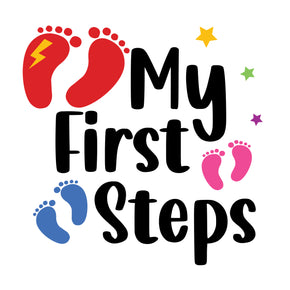Choosing Shoes For Your Child With Orthotics or AFO's
At My First Steps we know when your child requires orthotic or AFO support, finding the right shoes becomes essential for their comfort, stability, and overall foot health. Orthotics are designed to provide additional support, correct foot alignment, and alleviate discomfort caused by various conditions. Whether your child needs orthotics for flat feet, pronation issues, or other foot conditions, selecting the appropriate shoes can make a significant difference in their daily comfort and mobility. Here are some important features to consider when choosing shoes for your child who uses orthotics:
Here are our 10 key features for selecting shoes for your child with orthotics or AFO's;
-
Removable Insoles: Opt for shoes with removable insoles that can accommodate orthotic inserts comfortably. Removable insoles allow you to replace them with custom orthotics prescribed by your child's healthcare professional, ensuring proper support and alignment.
-
Wide Width and Depth: Look for shoes with a wide width and ample depth to accommodate both the orthotics and your child's feet comfortably. Shoes with a roomy toe box and a wide midfoot area provide sufficient space for orthotic inserts without causing discomfort or constriction.
-
Sturdy Heel Counter: A sturdy heel counter is crucial for providing stability and preventing excessive pronation or supination. Choose shoes with a firm heel counter or heel cup that holds the orthotics securely in place and promotes proper foot alignment during walking and other activities.
-
Supportive Arch: Consider shoes with built-in arch support or a contoured footbed to complement the support provided by the orthotics. Adequate arch support helps distribute weight evenly across the foot and reduces strain on the arches, providing relief from discomfort and fatigue.
-
Adjustable Closures: Opt for shoes with adjustable closures such as Velcro straps or laces to ensure a secure and customised fit. Adjustable closures allow you to accommodate variations in foot size and shape, as well as the thickness of the orthotic inserts.
-
Breathable Materials: Choose shoes made from breathable materials that allow air to circulate freely and prevent moisture buildup. Breathable shoes help maintain a dry and comfortable environment for your child's feet, reducing the risk of skin irritation and fungal infections.
-
Flexible Sole: Look for shoes with a flexible sole that allows natural foot movement and provides adequate sensory feedback. A flexible sole enables your child's feet to bend and flex with each step, promoting a more natural gait and enhancing proprioception.
-
Durable Construction: Select shoes with durable construction and quality materials that can withstand daily wear and tear. Reinforced stitching, durable outsoles, and high-quality materials ensure longevity and provide reliable support for your child's feet.
-
Lightweight Design: Consider lightweight shoes that are easy for your child to maneuver and do not add unnecessary bulk or weight. Lightweight shoes reduce fatigue during prolonged wear and allow your child to move freely and comfortably throughout the day.
-
Room for Growth: Keep in mind that children's feet grow rapidly, so choose shoes with a little extra room to accommodate growth. However, ensure that the shoes are not too loose or oversized, as proper fit is essential for effective support and stability.
Here are our 3 key brands for your child who wears orthotics or AFO's;
Biomecanics - Seam free design with maximum support
Geox - Ultimate breathability with a huge range of styles
Pablosky - Soft leathers, light weight designs and brilliant support for arches and heels
Book An In Store Appointment in Ennis or Galway or by Online Zoom Here
In conclusion, selecting the correct shoes for your child who uses orthotics or AFO's involves considering features such as removable insoles, wide width and depth, sturdy heel counter, supportive arch, adjustable closures, breathable materials, flexible sole, durable construction, lightweight design, and room for growth. By prioritising these features, you can ensure that your child's shoes provide optimal support, comfort, and functionality, allowing them to stay active and mobile with confidence. Additionally, consult with your child's healthcare provider or orthotist for personalised recommendations based on their specific orthotic needs and foot condition.

